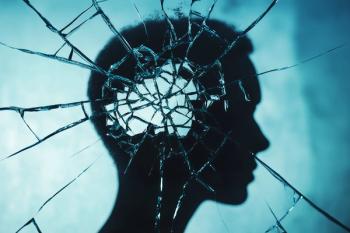
CBT for Psychosis
How to make cognitive behavioral therapy for psychosis feasible in a busy practice with limited resources.
RESEARCH UPDATE
Can cognitive behavioral therapy (CBT) be used in a busy practice setting for psychosis? Farooq Naeem, MD, and colleagues set out to prove that it was feasible in a brief self-help form. He discussed the results in his
In settings with limited resources, it can often be challenging to implement psychosocial resources for patients in remission from psychosis who continue to have residual positive and negative symptoms despite medication.
Issues arise with respect to cost limitations in publicly funded or managed care systems, and poor access to services. Only a minority of practices are able to engage a small number of trained therapists-if such therapists are available at all.
Dr Naeem pointed out that self-help interventions have been used for many years in the treatment of depression and anxiety; however,
Dr Naeem and colleagues conducted a
In his study, Dr Naeem randomized 33 individuals to either treatment as usual (TAU) or a treatment group that consisted of 12 to 16 sessions with a provider. Sessions focused on creating a treatment alliance, providing psychoeducation, distributing worksheets and handouts, and conceptualizing between-session homework.
These sessions typically lasted 15 to 20 minutes and focused on guiding the CBT work for between-session practice. Assessment of feasibility was based on feedback from patients and the professionals.
Strictly self-help models use evidence-based psychological therapy. The material may be in any “non-human media,” such as books, CD-ROMs, and web or phone applications, and may include individual or group formats. The aim of the intervention is to relieve symptoms and distress and to improve overall functioning, but without contact with a therapist or another person to direct treatment.
Guided self-help includes the above materials; however, it also involves brief sessions with someone to facilitate self-help. The facilitator can be a layperson, case manager, nurse, or therapist (in the last case, the contact would be at a minimum, often less than 25% of normal therapy sessions). The guidance could be face-to-face contact, by telephone, by email, or by any other communication method, flexible to the circumstances of the individual in need.
Results indicated significant reductions compared with TAU in positive and negative symptoms, hallucinations, and delusions, and an improvement in overall function and level of disability, based on measurements on the Positive and Negative Symptom Scale, the Psychotic Symptom Rating Scale, and the World Health Organization Disability Assessment Schedule 2.0. However, Dr Naeem noted that the study is limited by its small scale and is predominantly focused on the feasibility of the intervention rather than on efficacy.
The participants were highly motivated, were already engaged in treatment, and had only moderate levels of psychopathology and disability. Furthermore, they were generally well educated (64% had a college degree), and the majority (76%) were employed.
With respect to feasibility, Dr Naeem found that feedback was very good, with high levels of recruitment and retention and of acceptability among patients. He noted that what patients found particularly beneficial was the effect of normalizing their psychopathology: that their thoughts, emotions, and behavioral reactions were understandable in the context of their delusions and hallucinations.
The participants at the outset were encouraged to watch
Dr Naeem noted that the self-help approaches used may only be suitable for a selected group of patients, who have low severity of psychopathology, are motivated, and have the cognitive ability to engage the treatment, as self-help approaches require a good deal of autonomy.
Dr Naeem sees promise in the effective use of digital media, such as Internet and mobile phones, for providing psychotherapy to patients with many disorders in the future, “and this area is no exception.”
“Most important is to instill hope, especially those who do not see a lot of hope, if you connect and engage,” he said. Dr Naeem believes self-help CBT paradigms can be used effectively and can make a profound change in people’s lives, with the overall aim to instill hope, reduce stress, and improve well-being.
Disclosures:
Dr Kaylor is Chief Resident in the department of psychiatry and health behavior at the Medical College of Georgia, Augusta University, and a Staff Psychiatrist at The Bluff Plantation - Rivermend Health, in Augusta, Georgia.
References:
1. Lewis G, Anderson L, Araya R, et al. Self-help interventions for mental health problems. Report to the Department of Health, 1140. 2003.
2. Naeem F, Xiang S, Munshi TA, et al.
3. Wykes T, Huddy V, Cellard C, et al.
Newsletter
Receive trusted psychiatric news, expert analysis, and clinical insights — subscribe today to support your practice and your patients.













